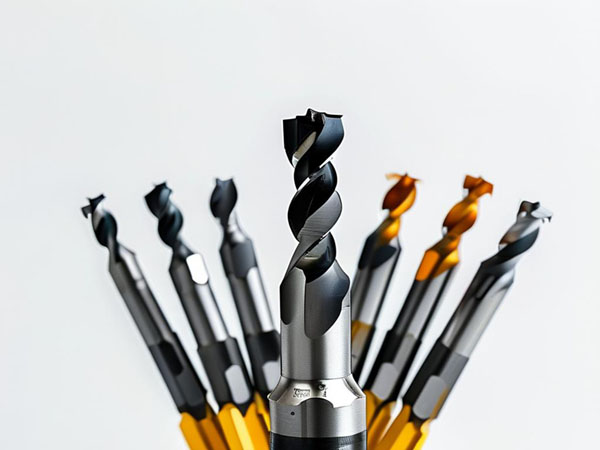The Engineering Logic Behind Milling Cutter Flute Count: A Precision Dialogue Between Material Properties, Cutting Mechanics, and Processing Scenarios
In the field of milling tool customization for foreign trade, flute count is more than just a numerical attribute on a cutter—it represents a precise interplay between material properties, cutting dynamics, and machining environments. As a technical factory with deep expertise in cutting tools, we decode the engineering logic behind flute selection, from microstructural analysis to macro machining parameters.
1. Definition and Classification of Milling Cutter Flute Count
1.1 Definition Analysis
The flute count of a milling cutter refers to the number of cutting edges distributed around its circumference. Essentially, it represents the balance between material removal rate and cutting force distribution. Unlike a simple numerical increase, modern tool design requires the flute count to form a “golden triangle” relationship with helix angle, chip evacuation capacity, and cutting edge length.
1.2 Core Classification
- By Flute Characteristics:
- Few-Flute Type (2-3 flutes): Functions like a low-gear mode in off-road vehicles; offers over 40% chip evacuation space in deep slot milling.
- Standard Type (4 flutes): The “universal choice” for machining, covering 80% of steel processing applications.
- High-Flute Type (6+ flutes): Ideal for precision machining, but requires tool holders such as HSK63 or higher.
- By Material Compatibility:
- Aluminum-Specific Flutes: 2 flutes with a large rake angle (20°-25°) to prevent built-up edge formation.
- Stainless Steel Optimized Flutes: 3-flute design with uneven pitch and nano-coating for anti-chip adhesion.
- Titanium-Optimized Flutes: 4-flute cutters with variable helix angles (35°-45° gradient) for improved heat dissipation.
- By International Standards:
- DIN 844 (Germany): Strict flute tolerance control within ±0.05 teeth.
- ANSI B94.19 (USA): Limits runout of cutting edges to ≤0.01mm.
- JIS B 4351 (Japan): Mandatory dynamic balance testing for odd-flute designs.
2. Mathematical Relationship Between Flute Count and Machining Efficiency
- Machining Efficiency Formula:
Q=z×fz×n
(Q: Material removal rate, z: Flute count, f_z: Feed per tooth, n: Spindle speed)
- Optimal Balance for Flute Selection:
| Flute Count | Advantages | Disadvantages | Suitable Applications |
|---|
| 2 Flutes | Large chip space | Limited feed rate | Deep slot machining, roughing aluminum |
>| 4 Flutes | High stability | Increased cutting force | Finishing steel, face milling |
>| 6 Flutes | Excellent surface finish | Requires high-rigidity machines | Hardened steel, titanium alloys |
- Case Study:
A German automotive component factory machining cast iron brake discs observed:
- Using 4-flute cutters: Cycle time of 18 minutes per part, tool life of 200 pieces.
- Switching to 6-flute cutters: Cycle time reduced to 14 minutes, but machine vibrations shortened tool life to 120 pieces.
- Conclusion: While efficiency improved by 22%, overall costs increased by 15%.
3. The Chemical Interaction Between Flute Count and Material Science
3.1 Aluminum Machining (ISO N Group)
- Flute Count Pitfall: 4-flute cutters tend to form built-up edge (BUE).
- Solution:
- 2-flute cutters with a high helix angle (above 45°).
- Mirror-polished rake face (Ra < 0.2μm).
- Case Study: A drone frame supplier in Dubai switched to 2-flute cutters, increasing the pass rate from 78% to 95%.
3.2 Stainless Steel Machining (ISO M Group)
- Key Challenge: Work hardening depth reaches up to 0.1mm.
- Flute Count Formula:

z=D ÷ (3×h)
- Example: A Φ12mm tool machining a 4mm deep slot should use 3 flutes.
3.3 Composite Material Machining
- Layer Delamination Control:
- Odd-flute designs (3/5 flutes) minimize harmonic vibration.
- Sharp cutting edges (increased relief angle to 20°).
- Case Study: An Israeli aerospace company found that using 5-flute cutters reduced fiber delamination by 63% compared to 4-flute cutters.
4. Three Golden Rules for Flute Selection
- Rule 1: Match the Flute Count to the Material
- Aluminum/Plastics: 2-3 flutes (like a comb with wide spacing to avoid clogging).
- Steel: 4 flutes for the best balance (similar to four claws lifting a heavy object steadily).
- Stainless Steel: 3 flutes with a helical chip groove to prevent material adhesion.
- Rule 2: Consider Cutting Depth
- Deep Slot Machining: 2 flutes (like stirring a deep cup of milk tea with a thin straw).
- Shallow Surface Machining: 4 flutes for higher efficiency (like using a fine-tooth comb for short hair).
- Rule 3: Match Flute Count to Machine Capability
- Older Machines: 2-3 flutes for stability (like a small-engine car avoiding excessive load).
- Modern CNC Machines: 4-6 flutes for optimized performance (like a high-horsepower SUV handling heavy-duty tasks).
5. Custom Flute Optimization Workflow
- Step 1: Operating Condition Diagnosis
- Analyze machine vibration spectrum (0-5000Hz).
- Examine chip morphology (length, curling behavior, discoloration).
- Step 2: Flute Count Optimization Trials
- Apply Taguchi method for orthogonal test design.
- Key metric: Cutting force fluctuations should remain below 15%.
- Step 3: Tool Life Validation
- LMT (Germany) Standard Testing:
- For every +1 flute, cutting speed must be reduced by 8-12%.
- Tool wear at 0.3mm flank wear marks end-of-life.
6. Conclusion
The choice of flute count is a strategic trade-off among machining efficiency, cost control, and product quality stability. Understanding the interactions between materials, machine tools, and processing techniques—while also considering the unique demands of different markets—allows manufacturers to truly optimize performance and cost-effectiveness.



 z=D ÷ (3×h)
z=D ÷ (3×h) 
 We like to do design according to all the customers' requirements, or offer them our new designs. With strong OEM/ODM capabilities, we can fill your sourcing demands.
We like to do design according to all the customers' requirements, or offer them our new designs. With strong OEM/ODM capabilities, we can fill your sourcing demands.